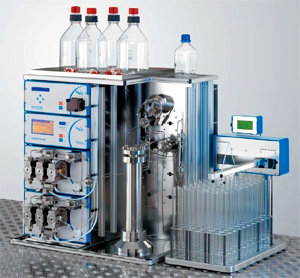|
HPLC Operations
The HPLC (High Performance Liquid Chromatography) is a method of separating mixtures into their individual
components for the purpose of isolation, identification, or quantification. The sample is dissolved in a
liquid. The sample is carried by a moving liquid (the mobile phase) through a tube (the column). The column is
tightly packed with a finely divided solid material (stationary phase). During the passage through the column,
the components move at different rates by virtue of differences in chemical or physical interaction with the
stationary phase and thus exit the column separately. The high separating power is achieved by the column,
which uses very small particles of large surface area, which are densely packed in the column. A pump is used
to allocate the proper liquid flow rate through the column. A design of the optic assembly is attached. There
are two types of partition chromatography, normal and reverse phase. The differences between the two are based
upon the relative polarities of the mobile and stationary phases. Normal phase is the process in which a
non-polar solvent (hexane) is used as the mobile phase and a polar (silica and water based column) is used as
the stationary phase. The reverse phase is just the opposite. A polar solvent (water or acetonitrile) is used
as the mobile phase with a non-polar stationary phase (a hydrocarbon).
Importance of the HPLC Test
The HPLC test is used to help distinguish the fluid’s basestock, determine if contamination is present and to
determine the condition of the lubricant’s antioxidant package (if applicable).
|

